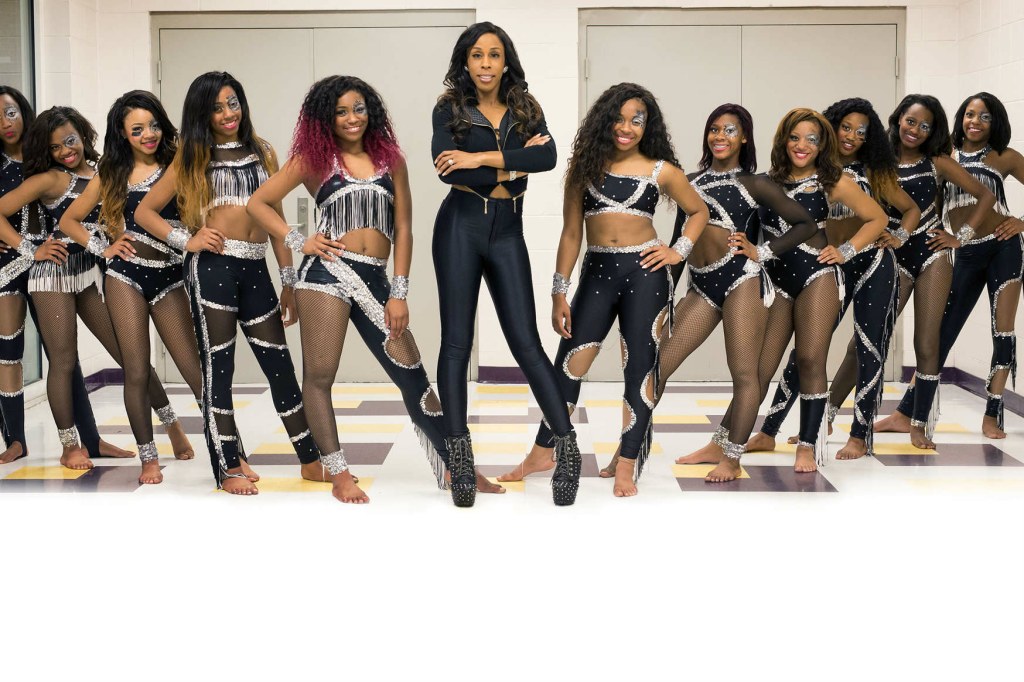Discover Mesmerizing Majorette Dance Names That Will Make You Click To Action!
Majorette Dance Names: Unveiling the Vibrant World of Dance
Greetings, Dance Enthusiasts! Are you ready to explore the captivating world of majorette dance names? In this article, we’ll dive into the rich history, significance, and popularity of these names in the realm of dance. Whether you’re a seasoned performer or a curious observer, get ready to be inspired by the unique and enchanting names that define the majorette dance community.
Introduction
Majorette dance names play a pivotal role in the world of performance art, serving as a reflection of the creativity and individuality within this vibrant community. These names hold deep meanings, often representing the essence of a dance routine or embodying the spirit of the performers. Let’s embark on a journey to uncover the fascinating origins and evolution of majorette dance names.
1 Picture Gallery: Discover Mesmerizing Majorette Dance Names That Will Make You Click To Action!
The realm of majorette dance encompasses a diverse range of styles, including baton twirling, pom-pom routines, and choreographed dances. Each style has its own distinct characteristics, and the names associated with these dances add an extra layer of allure and excitement to the performances. From catchy and energetic titles to elegant and graceful names, the world of majorette dance names is a treasure trove waiting to be explored.
Within the majorette dance community, names are carefully chosen to reflect the theme, mood, or narrative of a routine. They can evoke emotions, tell stories, or simply capture the essence of the choreography. Whether it’s a fierce and powerful routine or a graceful and delicate performance, the right name can elevate the overall impact and leave a lasting impression on both performers and audiences alike.

Image Source: philly.com
Now, let’s delve into the various aspects of majorette dance names, including their origins, significance, and the creative process behind their selection. By understanding these elements, we can gain a deeper appreciation for the artistry and thoughtfulness that goes into the naming of these captivating dance routines.
The What of Majorette Dance Names: Unveiling the Essence
At its core, majorette dance names serve as a reflection of the essence of a routine. They encapsulate the style, mood, or theme that the dancers aim to convey through their performance. These names can be abstract, descriptive, or even symbolic, allowing the audience to mentally connect with the dance before it even begins. With such a diverse range of styles within the majorette dance community, the names can vary greatly, catering to the unique characteristics of each routine.
From energetic and dynamic routines to elegant and graceful performances, the range of majorette dance names is vast. Whether it’s Tornado Twirl, Dazzling Diamonds, or Serenade of Silk, these names capture the essence of the choreography and provide a glimpse into the world of majorette dance.
The Who of Majorette Dance Names: Discovering the Performers
Behind every captivating majorette dance routine are the talented performers who breathe life into the choreography. The names associated with these routines not only reflect the essence of the dance but also showcase the individuality and creativity of the dancers themselves.
Many majorette dance groups have their own naming conventions, which may include elements like the team’s name or initials combined with descriptive adjectives or nouns. This combination creates unique and memorable names that not only represent the dance but also give identity to the group performing it. For example, The Radiant Twirlers or The Stellar Stars are names that not only capture the essence of the routine but also symbolize the unity and teamwork within the group.
The When of Majorette Dance Names: A Glimpse into History
The history of majorette dance names dates back several decades, with roots in the early 20th century. Originally, majorettes were primarily associated with marching bands, leading parades and providing visual entertainment. The names of their routines often reflected the festive and celebratory nature of these events.
Over time, majorette dance evolved into a distinct art form, influenced by various dance styles and techniques. As the dance routines became more intricate and sophisticated, so did the names associated with them. Today, majorette dance names encompass a wide range of themes, from classical and traditional to modern and innovative, showcasing the evolution and progression of this captivating art form.
The Where of Majorette Dance Names: Celebrating Global Influence
Majorette dance is a global phenomenon, celebrated in various cultures and countries around the world. As a result, the names associated with these routines are influenced by diverse linguistic and cultural backgrounds. From English to French, Spanish to Japanese, the names of majorette dances incorporate elements from different languages, adding a multicultural flair to the performances.
For example, a routine named Énergie Élégante combines French and English to evoke a sense of elegance and energy, while Sakura Serenade infuses Japanese symbolism into the dance, paying homage to the beauty of cherry blossoms.
The Why of Majorette Dance Names: The Power of Expression
Majorette dance names serve a deeper purpose than simply labeling a routine. They provide a means of expression and communication, allowing dancers to convey their artistic vision and connect with their audience on a profound level. The carefully selected names act as a bridge between the performers and the spectators, setting the stage for an immersive and captivating experience.
By infusing emotions, stories, and themes into the names, dancers can create a powerful connection with their audience. Whether it’s a name that evokes excitement, nostalgia, or inspiration, the impact of a well-chosen majorette dance name can be transformative, leaving a lasting impression on both the performers and those fortunate enough to witness the routine.
The How of Majorette Dance Names: Unleashing Creativity
The process of choosing a majorette dance name is a creative endeavor that involves a combination of inspiration, collaboration, and imagination. Choreographers, dancers, and even the entire dance group contribute to this process, ensuring that the final name perfectly encapsulates the vision and spirit of the routine.
Brainstorming sessions, discussions, and feedback sessions are often held to explore various ideas and concepts. The goal is to create a name that not only represents the dance but also resonates with the performers and captures the attention of the audience.
Advantages and Disadvantages of Majorette Dance Names
Advantages
1. Enhances the overall impact of the performance: Majorette dance names add an extra layer of excitement and allure to the routine, enhancing the overall impact on the audience.
2. Reflects the uniqueness and creativity of the dancers: These names are a reflection of the individuality and creativity of the dancers, showcasing their artistic vision and talent.
3. Creates a lasting impression: A well-chosen majorette dance name can leave a lasting impression on both performers and audiences, ensuring that the routine is remembered long after the performance.
4. Provides a glimpse into the theme or mood of the routine: The names offer a sneak peek into the theme, mood, or narrative of the dance, setting the stage for an immersive experience.
5. Adds a sense of professionalism and identity: Majorette dance names contribute to the professionalism and identity of the dance group, creating a cohesive and memorable brand.
Disadvantages
1. Difficulty in capturing the essence of the routine: Choosing a name that perfectly captures the essence of a routine can be challenging, as it requires careful consideration and creativity.
2. Subjectivity in interpretation: Different individuals may interpret the same name differently, potentially leading to variations in understanding and appreciation of the routine.
3. Limited linguistic accessibility: Names that incorporate multiple languages or cultural references may pose challenges in terms of linguistic accessibility for non-native speakers.
4. Potential for oversaturation: With the popularity of majorette dance on the rise, there is a possibility of certain names becoming oversaturated, diminishing their impact and uniqueness.
5. Can overshadow the dance itself: In some cases, a captivating name may overshadow the dance performance itself, shifting the focus away from the actual choreography.
Frequently Asked Questions
1. Are majorette dance names specific to a particular style or region?
No, majorette dance names are not specific to a particular style or region. They can be found in various majorette dance styles and are influenced by different cultural backgrounds.
2. How can I come up with a unique and captivating majorette dance name?
To come up with a unique and captivating majorette dance name, consider the theme, mood, or narrative of your routine. Brainstorm ideas, seek inspiration from various sources, and collaborate with your dance group to find the perfect name that reflects your vision and captivates your audience.
3. Can majorette dance names be changed over time?
Yes, majorette dance names can be changed over time. As routines evolve, choreographers and dancers may choose to update the name to better reflect the changes in the routine or to create a fresh and exciting identity for the performance.
4. Can majorette dance names be trademarked?
Yes, majorette dance names can be trademarked if they meet the necessary criteria for trademark registration. However, it is important to conduct thorough research and consult with legal professionals to ensure that the name is eligible for trademark protection.
5. Are there any guidelines for choosing a majorette dance name?
While there are no strict guidelines for choosing a majorette dance name, it is important to consider the audience, cultural sensitivities, and the overall image you wish to portray. Additionally, it is crucial to ensure that the name aligns with the theme, mood, and style of the routine.
Conclusion
In conclusion, majorette dance names hold great significance within the world of performance art. They encapsulate the essence of the routines, reflect the creativity and individuality of the dancers, and provide a means of expression and connection with the audience. While there are advantages and disadvantages to consider, the power of a captivating majorette dance name cannot be underestimated.
As you continue your journey in the world of dance, embrace the artistry and uniqueness of majorette dance names. Let them inspire you to push boundaries, tell stories, and create performances that leave a lasting impression. The vibrant world of majorette dance names awaits, ready to ignite your imagination and captivate your audience.
Disclaimer: The information provided in this article is for general informational purposes only and should not be considered as professional advice. Consult with a qualified dance instructor or choreographer for personalized guidance and recommendations.
This post topic: Dance

